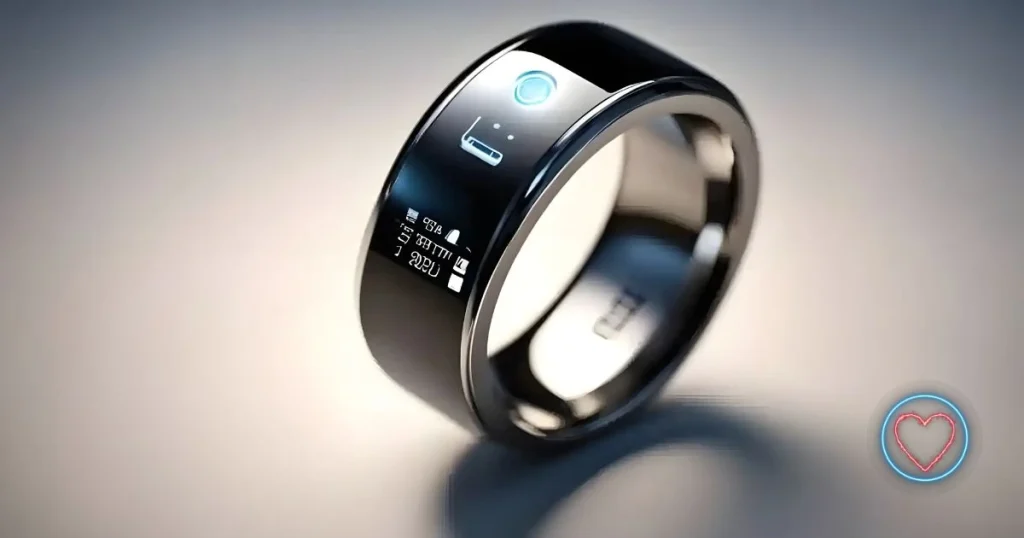Smart rings are revolutionizing wearable technology by offering discreet, stylish, and powerful health tracking in a compact form. As of 2025, these sleek devices are gaining popularity among wellness enthusiasts, tech-savvy consumers, and professionals seeking unobtrusive health monitoring solutions.
What Is a Smart Ring?
A smart ring is a compact wearable device designed to be worn on the finger, integrating sensors and technology to monitor various health and activity metrics. These rings typically track data such as heart rate, sleep patterns, body temperature, and activity levels, syncing with smartphone apps to provide users with insights into their well-being. Unlike bulkier wearables, smart rings offer a minimalist design, making them ideal for continuous, 24/7 wear.
The Rise of Smart Rings in 2025
The smart ring market is experiencing significant growth. According to industry reports, the global smart ring market size was valued at USD 340.9 million in 2024 and is projected to grow to USD 416.9 million in 2025, exhibiting a CAGR of 29.3% during the forecast period. This surge is driven by increasing consumer demand for health monitoring, the convenience of wearable technology, and advancements in sensor accuracy and battery life.
Key Features of Smart Rings
1. Health and Fitness Tracking
Smart rings are equipped with sensors that monitor:
- Heart Rate: Continuous monitoring to assess resting and active heart rates.
- Sleep Patterns: Tracking sleep stages, duration, and quality to provide insights into sleep health.
- Body Temperature: Monitoring fluctuations to detect potential health issues.
- Activity Levels: Counting steps, calories burned, and overall activity to encourage movement.
These features enable users to gain a comprehensive understanding of their health and make informed lifestyle choices.
2. Discreet Design
One of the standout advantages of smart rings is their unobtrusive design. Unlike smartwatches or fitness bands, smart rings are subtle and stylish, allowing users to wear them in various settings without drawing attention. This makes them particularly appealing to professionals and individuals who prefer minimalist accessories.
3. Long Battery Life
Smart rings typically offer impressive battery life, often lasting several days on a single charge. This extended battery performance ensures continuous health monitoring without the need for frequent recharging, enhancing user convenience.
4. Water Resistance
Many smart rings are designed to be water-resistant, allowing users to wear them while washing hands, showering, or during workouts without concern. This durability adds to their practicality for everyday use.
Leading Smart Rings in 2025
1. Oura Ring 4
The Oura Ring 4 is renowned for its advanced health tracking capabilities, including accurate sleep analysis, heart rate monitoring, and body temperature sensing. Its sleek design and user-friendly app make it a top choice for health-conscious individuals. The ring’s ability to provide early illness detection by analyzing changes in vital signs sets it apart in the market.
2. Samsung Galaxy Ring
Samsung’s Galaxy Ring offers seamless integration with the Samsung ecosystem, providing features like blood oxygen level monitoring, skin temperature tracking, and heart rate monitoring. Its compatibility with Samsung Health and other devices enhances user experience, although some advanced features require pairing with a Samsung Galaxy phone.
3. Ultrahuman Ring Air
The Ultrahuman Ring Air focuses on fitness enthusiasts, offering a fitness-centric app with optional feature add-ons and no mandatory subscription. Its design emphasizes comfort and durability, catering to users seeking a balance between functionality and style.
4. RingConn Gen 2 Air
The RingConn Gen 2 Air stands out for its affordability and impressive battery life. It provides solid accuracy in health tracking, making it an excellent entry-level option for those new to smart rings.
Pros and Cons of Smart Rings
Pros:
- Discreet Wear: Smart rings offer a subtle alternative to traditional wearables, suitable for various occasions.
- Continuous Monitoring: They provide 24/7 health tracking without the bulk of larger devices.
- Stylish Designs: Available in various styles and materials, smart rings can complement personal aesthetics.
Cons:
- Limited Display: Most smart rings lack screens, requiring users to check data via connected apps.
- Feature Limitations: Compared to smartwatches, smart rings may offer fewer features like notifications or GPS.
- Compatibility: Some smart rings are optimized for specific ecosystems (e.g., Samsung), potentially limiting functionality with other devices.
The Future of Smart Rings
As technology advances, smart rings are expected to incorporate more sophisticated features, such as advanced biometric sensors, gesture controls, and enhanced integration with other smart devices. The market is poised for growth, with projections indicating a significant increase in adoption rates over the coming years. Innovations in materials and design will likely make smart rings even more appealing to a broader audience.
Conclusion
Smart rings represent a significant step forward in wearable technology, offering a blend of functionality, style, and convenience. Whether you’re a health enthusiast, a tech aficionado, or someone seeking a minimalist approach to health monitoring, smart rings provide a compelling solution. As the market continues to evolve, these devices are set to become an integral part of our daily lives, seamlessly integrating health tracking into our routines.




















